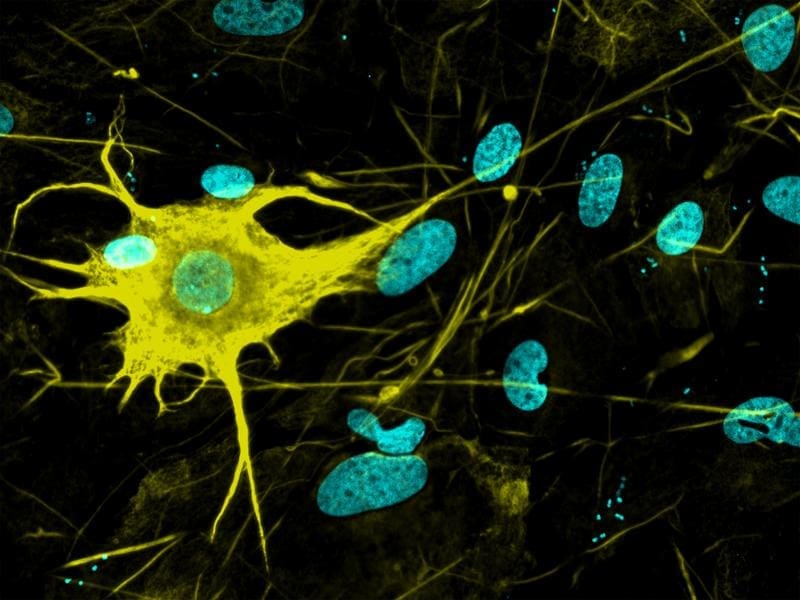Groundbreaking: 400 nerve cell types produced from stem cells
Researchers at ETH Zurich have succeeded for the first time in producing over 400 different types of nerve cells from human stem cells in a petri dish. This breakthrough will make it possible to study neurological diseases in cell cultures instead of animal experiments. Nerve cells are diverse and differ in function, cell processes, connectivity, released neurotransmitters and their distribution in the brain, for example in the cerebral cortex or midbrain. Until now, scientists have only been able to generate a few dozen nerve cell types in vitro by activating certain signaling pathways using genetic engineering or signaling molecules, without being able to reproduce the actual diversity of the human brain. However, for research into diseases such as Alzheimer’s, Parkinson’s or depression, it is crucial to consider the relevant nerve cell types.
The ETH researchers used reprogrammed human stem cells obtained from blood cells and specifically activated control genes and morphogens in various combinations and concentrations. Systematic screening of almost 200 experimental conditions resulted in over 400 nerve cell types. Morphogens, known from embryonic development, control the position of cells in the embryo and thus influence their development. The researchers analyzed the RNA, appearance and function of the cells, such as their cell processes and electrical impulses, and compared the data with databases of human brain cells. In this way, they identified cell types of the peripheral nervous system, the brain and their specific functions, such as the perception of pain or movement.

Although not all nerve cell types of the brain have been reproduced yet, the diversity represents a milestone for basic research. The nerve cells produced in vitro are intended to enable cell culture models for diseases such as schizophrenia, epilepsy or multiple sclerosis and to support pharmaceutical research in order to test active substances without animal testing. In the long term, the method could promote cell replacement therapies in which defective nerve cells are replaced by new ones. One challenge remains to refine the method so that only one defined cell type is created per experiment. Initial approaches to this are already being developed.
Original Paper:
Lin HC, Janssens J, Eisinger B, Hornauer P, Kroell AS, Santel M, Pascual-Garcia M, Okamoto R, Karava K, He Z, Priouret M, SchrûÑter M, Camp JG, Treutlein B: Human neuron subtype programming via single-cell transcriptome-coupled patterning screens. Science, July 10, 2025, doi: 10.1126/science.adn6121
Editorial office: X-Press Journalistenbû¥ro GbR
Gender note. The personal designations used in this text always refer equally to female, male and diverse persons. Double/triple references and gendered designations are avoided in favor of better readability.




